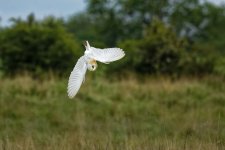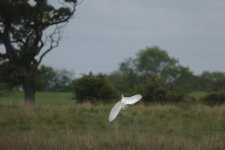I was asking myself the same question, so I rented an R6 (mated it to an RF 100-500mm lens) for a weekend and took it to several different environments that normally bird in - open hardwoods, dense conifers, marshlands, etc. Overall, it is a solid performer.
Likes that stood out to me:
- Wonderful ergonomics and handling - coupled with that lens it is very light and an easy all-day carry
- Easy, intuitive buttons, dials and menu
- Almost every button and dial is customizable - easy to set up back-button focus
- IS was simply outstanding
- Camera is fast in every way, startup, shutter speed, autofocus, etc
Personal dislikes (or things that i find better in other cameras)
- Eye Autofocus = although it generally worked very well for larger birds in the open or birds in flight, it struggled to find birds in busy environments, small birds (even in the open), or anything in shadows or backlit
- Spot Focus = although I had a separate button set up for when the eye autofocus struggled, the smallest pre-defined spot focus box is still far too coarse (Sony is much more precise). This caused a good number of my warbler and small bird shots to be slightly out of focus
- Cropping = would tend to agree with some here. With the 100-500mm lens shots on warblers often need cropping, with 20mp I wasn’t always fully satisfied with the results
I realize that these were just initial impressions and more refined experience with this camera and settings may yield better results. But I’ve pre-ordered the R7 as I‘m anticipating the autofocus will be a tick better, the crop-sensor will enhance the reach of the 100-500mm lens, it will put more pixels on the desired subjects, and I’m really hoping it has a more precise spot focus.







